Do you want to know how can thyroid cancer be cured?
It is natural to feel uncertain or scared when diagnosed with thyroid cancer. However, with the right knowledge and treatment, it is highly possible to cure this common endocrine cancer.
The good news is studies show that if caught early, thyroid cancer can often be cured with little to no recurrence of the disease.
Let’s find out whether the experts are right.
What is Thyroid Cancer?
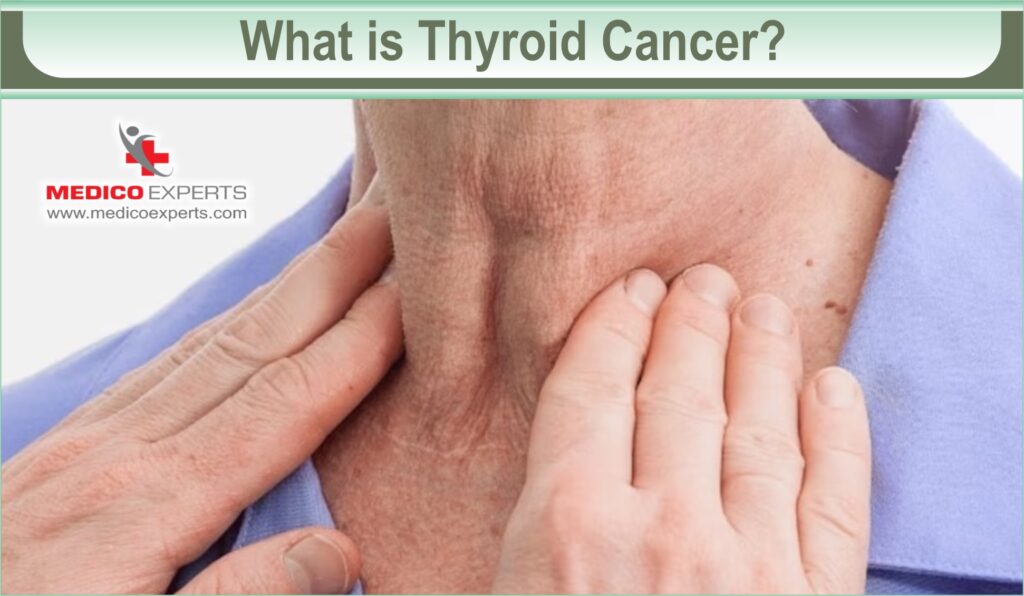
Thyroid cancer occurs when abnormal cells form in the thyroid gland—a small butterfly-shaped organ located at the base of your neck.
Thyroid cancer can develop in around 1-2% of people throughout their life, with it being three times more common in women than men. It is usually found in individuals over the age of 30 but can occur in any age group. Older adults are at a higher risk of developing aggressive forms of thyroid cancer.
The most common types of thyroid cancer are papillary and follicular cancers, which start in different parts of the gland but share similar characteristics.
Related: Different Types of Thyroid Cancer
How Can Thyroid Cancer Be Cured?
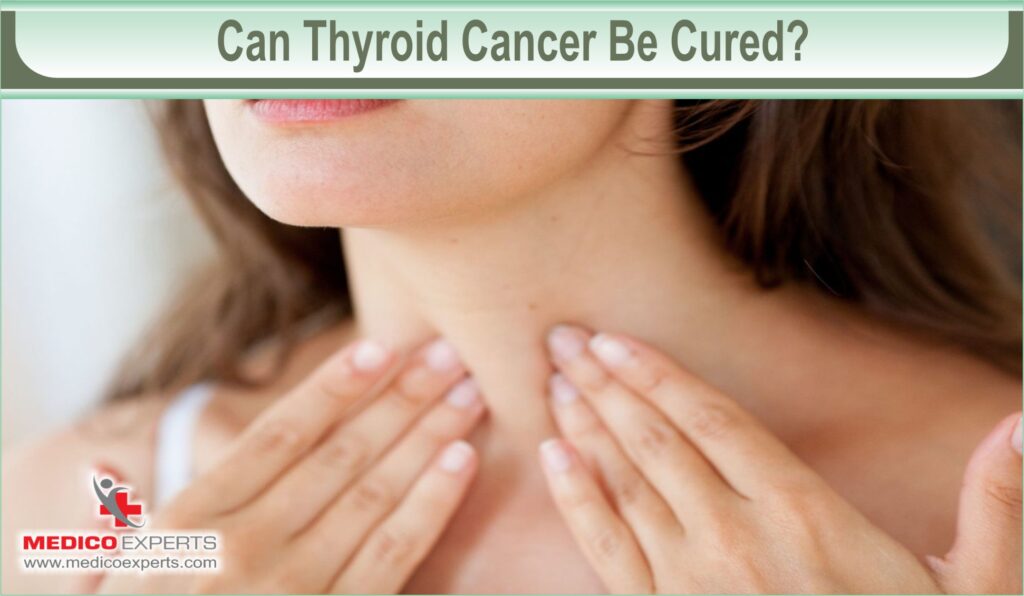
Studies show that if caught early, thyroid cancer can often be cured with little to no recurrence of the disease.
Thyroid cancer has a high likelihood of being curable, particularly when it has not spread to other parts of the body. If curing the cancer is not possible, the treatment aims to remove or eliminate as much of the cancer as feasible and prevent its growth, spread, or recurrence for as long as feasible.
Let us now move to the Stages of Thyroid Cancer.
What Are The Stages of Thyroid Cancer?
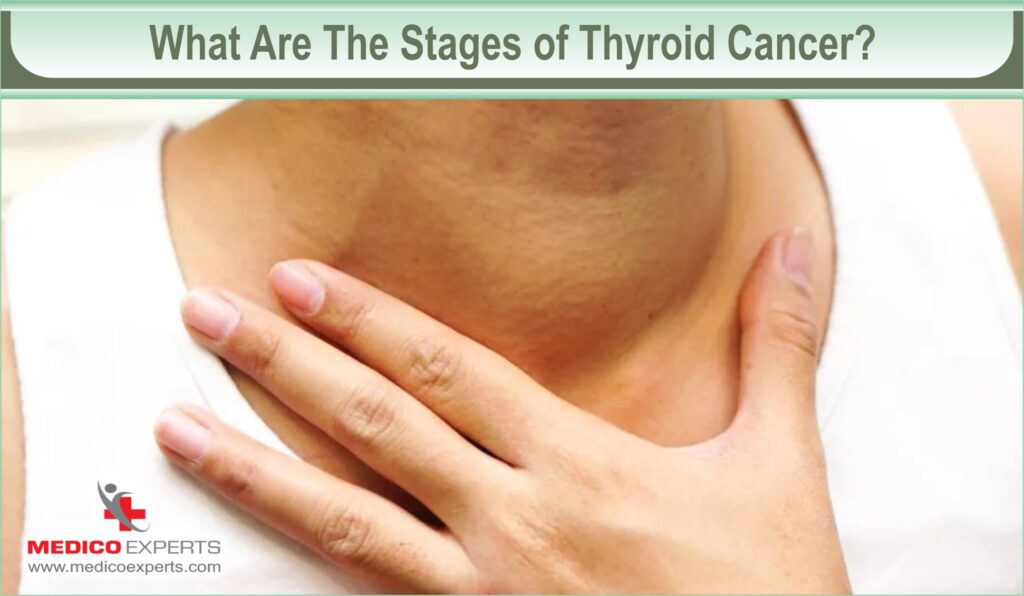
The stage of cancer is used to describe the size and spread of the cancer. Knowing the stage is essential for determining a prognosis and treatment plan.
Understanding T, N, and M Categories
Thyroid cancer staging is a crucial aspect of determining the extent and spread of the disease. The American Joint Committee on Cancer (AJCC) guidelines are commonly utilized for staging thyroid cancers. These guidelines are based on three categories: T (tumor), N (node), and M (metastasis). Let’s delve into each of these categories to gain a comprehensive understanding.
T (Tumor): This category focuses on the size of the primary tumor.
N (Node): It shows whether local lymph nodes have picked up thyroid cancer cells if they have.
M (Metastasis): This category examines whether the cancer has successfully metastasized and spread to distant areas of the body.
The staging classification system for thyroid cancer is similar for older patients with differentiated tumors and those with medullary thyroid cancer. Age is not a determining factor in classifying medullary cancers.
Stage 1 Thyroid Cancer:
The tumor is 2 centimeters (cm) or smaller (less than an inch wide) and has not extended beyond the thyroid. It has not metastasized to nearby lymph nodes or distant sites.
Stage 2 Thyroid Cancer:
The cancer meets either of the following criteria:
- The main tumor has a diameter of 2 to 4 cm. There is no evidence of cancer cells in regional lymph nodes or distant sites in the body.
- The primary tumor is larger than 4 cm in diameter or has begun to extend outside the thyroid gland. No lymph nodes or other areas of the body have shown signs of malignancy.
Stage 3 Thyroid Cancer:
The cancer meets either of the following criteria:
- The original tumor is more than 4 cm in size or has grown outside the thyroid, but it has not metastasized (differentiated tumors alone) to adjacent lymph nodes or elsewhere.
- The tumor can be any size and located outside the thyroid, spreading to lymph nodes in the neck but not beyond.
- Understanding the staging of thyroid cancer is crucial for accurate diagnosis and treatment planning.
Stage 4 Metastatic Thyroid Cancer:
Metastatic thyroid cancer is the most advanced stage, indicating the spread of cancer beyond the thyroid gland. About 30 percent of thyroid cancers are diagnosed after the cancer has reached regional lymph nodes. In rare cases, around 3 percent, the cancer may spread to distant sites or organs.
Metastatic thyroid cancer stages are categorized based on the extent of spreading:
- Stage 4A: Cancer has extended beyond the thyroid gland and may infiltrate nearby tissues or lymph nodes in the neck and upper chest, but not distant sites.
- Stage 4B: The primary tumor has invaded the spine or nearby large blood vessels. At this stage, cancer may or may not have reached lymph nodes but has not spread to distant sites.
- Stage 4C: Thyroid cancer cells have metastasized to distant sites.
Stage 4 Anaplastic Thyroid Cancer
Anaplastic thyroid cancer which is highly aggressive, is considered stage 4 regardless of its subtype:
- Stage 4A: The thyroid gland is the site of the original tumor, which may have migrated to adjacent lymph nodes but not to distant organs.
- Stage 4B: The tumor has migrated beyond the thyroid gland, and cancer cells may or may not exist in localized lymph nodes, but distant areas are untouched.
- Stage 4C: The cancer cells have moved on from the thyroid gland and into other organs and tissues further afield.
Thyroid cancer cells can metastasize to various locations through the lymphatic system or bloodstream. The most common sites of thyroid cancer metastasis include the lungs, bones, liver, and brain.
What Are The Treatments for Thyroid Cancer?
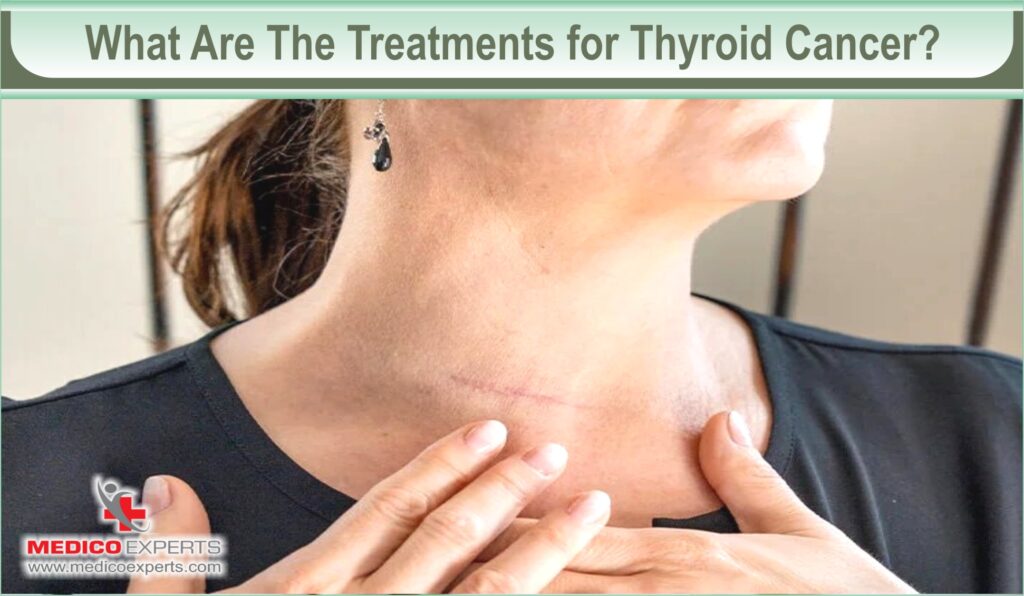
Treatment of thyroid cancer is based on the stage and type of disease.
Thyroid cancer management and treatment options vary depending on tumor size and the extent of cancer spread.
Below are the commonly used treatments:
1. Surgery:
Surgery is the primary treatment for thyroid cancer. The surgical approach may involve partial removal of the thyroid gland (lobectomy) or complete removal (thyroidectomy), depending on tumor size and location. Surgeons may also remove nearby lymph nodes affected by cancer cells.
2. Radioiodine Therapy:
This therapy involves taking a high-dose radioactive iodine pill or liquid, which is different from the doses used in diagnostic scans. Radioiodine therapy effectively shrinks and destroys the cancerous thyroid gland and any associated cancer cells. Although safe, radioiodine is primarily absorbed by the thyroid gland, minimizing radiation exposure to the rest of the body.
3. Radiation Therapy:
This treatment aims to destroy cancer cells and prevent their further growth. External radiation therapy utilizes a machine to deliver concentrated beams of energy precisely to the tumor site. Internal radiation therapy, also called brachytherapy, involves inserting radioactive seeds directly into or near the tumor.
4. Chemotherapy:
Chemotherapy drugs, administered intravenously or orally, are effective in killing cancer cells and impeding their growth. However, chemotherapy is rarely required for thyroid cancer patients.
5. Hormone Therapy:
This treatment prevents the release of hormones that can contribute to cancer spread or recurrence.
Understanding and exploring these various thyroid cancer management and treatment options can help individuals make informed decisions about their health.
6. Thyroid Hormone Replacement Therapy:
Hormone replacement therapy is used to replace the hormone that your body can no longer produce after a thyroidectomy. This treatment helps to control your metabolism and can help improve any symptoms related to an underactive thyroid.
7. Radioactive Iodine Therapy:
This treatment is used to target and destroy any remaining thyroid cells after a thyroidectomy. It is also effective in the treatment of thyroid cancer that has progressed to other regions of the body. The treatment involves taking a liquid or pill containing a radioactive form of iodine, which is absorbed by the thyroid cells. The radiation kills the cancerous cells, while healthy cells remain unaffected.
8. Low Iodine Diet:
Patients may need to follow a low-iodine diet prior to their radioactive iodine therapy. During this time, they should avoid foods with high levels of iodine, such as dairy, iodized salt, seafood, and processed foods.
9. External Beam Radiation Therapy:
External beam radiation therapy uses high-energy particles or waves to destroy cancer cells. This treatment is typically used for advanced cases of thyroid cancer in which the tumor has spread to other parts of the body.
10. Active Surveillance:
Active surveillance is a treatment option for low-risk thyroid cancer which involves monitoring the tumor with regular scans. This can help to identify any changes in the tumor over time, allowing for timely treatment if the cancer progresses.
Overall, there is a variety of treatment options available to treat thyroid cancer. Understanding the staging of thyroid cancer is key for accurate diagnosis and treatment planning. It is important to discuss all available options with your doctor to find the most suitable treatment for you.
What Are The Side Effects of Thyroid Surgery?

Thyroid surgery can cause a variety of side effects, ranging from temporary discomfort to more serious medical complications. The most common side effects include:
- Excessive bleeding
- Infection
- Scarring
- Injury to nearby structures, such as the voice cords and parathyroid glands
- Low calcium levels
- Hypothyroidism, which can cause fatigue, dry skin, constipation, and other symptoms
- High calcium levels, which can lead to kidney stones and other health problems
Patients should discuss any potential side effects with their doctor before undergoing thyroid surgery. It is also important to follow all care instructions after the procedure, including taking any prescribed medications and avoiding strenuous activity.
What Are The Side Effects Of Thyroid Hormone Treatment?

The most common side effects of thyroid hormone replacement therapy are related to taking too much medication. These may include:
- Weight loss
- Insomnia
- Nervousness, irritability, or anxiety
- Heat intolerance
- Palpitations or other heart irregularities
- Diarrhea
- Tremors or shaking
What Are The Side Effects of Radioactive Iodine Therapy?
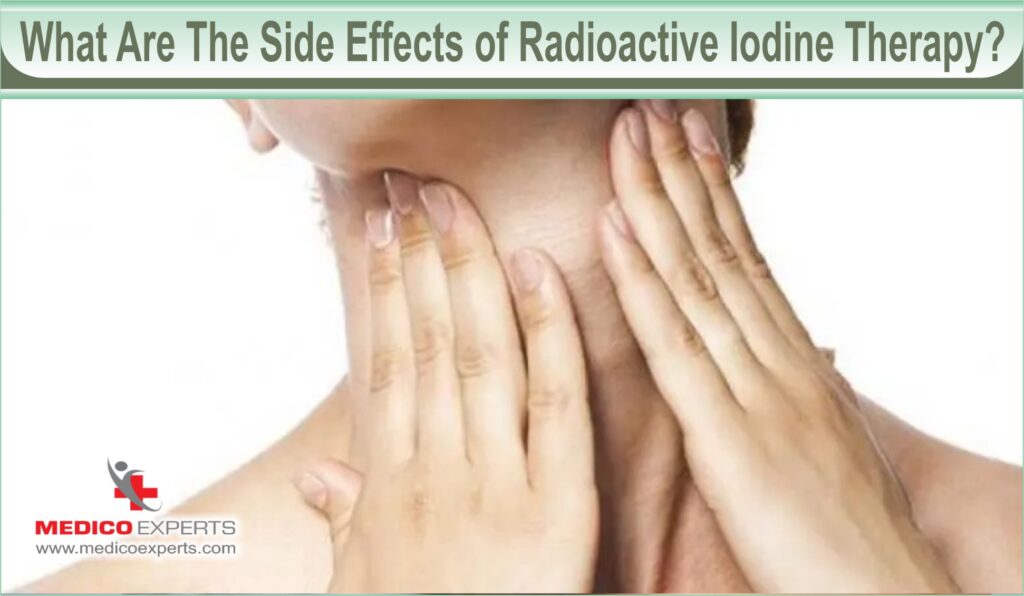
Radioactive iodine therapy is generally well tolerated, although common side effects include:
- Nausea or vomiting
- An increase in saliva production
- A metallic taste in the mouth
- Swelling of the neck area
- Temporary hair loss on the head
- Dry skin or itching
- Mild fever
- Loss of appetite
- Fatigue
It is important to follow your doctor’s instructions carefully while undergoing radioactive iodine therapy, and to be aware of the potential risks and side effects.
Overall, there are a variety of treatment options available for thyroid cancer. Knowing the potential benefits and side effects of each can help individuals make informed decisions about their treatment plans.
MedicoExperts Tumour Board is an innovative platform that connects doctors from all around the world for a focused discussion on multiple aspects of treatment planning. It provides a unique opportunity to connect with the best cancer specialists and get an expert opinion quickly.
Understanding Survival Rates of Thyroid Cancer
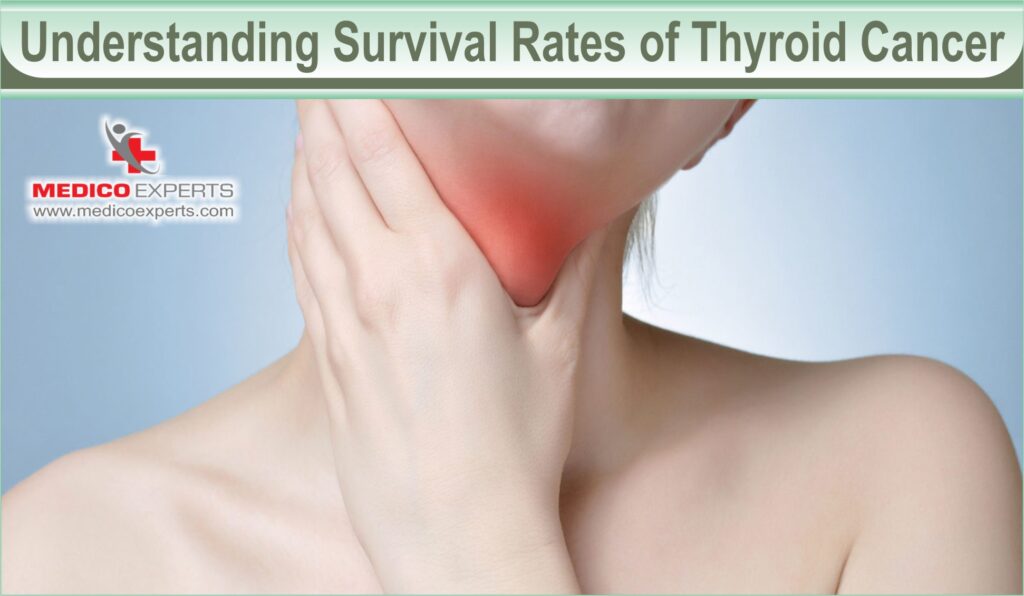
- Follicular: The localized form boasts a close-to-100% survival rate, while the rate drops to around 63% for metastasized cases.
- Medullary: Similar to follicular thyroid cancer, the localized variation has a close-to-100% survival rate. However, the rate lowers to approximately 40% for metastasized cases.
- Anaplastic: This type has lower survival rates, with localized cases having close to a 31% chance of survival and metastasized cases seulement 4%.
Conclusion:
With MedicoExperts Tumour Board you can personalize your treatment plan and receive the best quality care. The Tumour Board gives you access to a wealth of knowledge and experience, all in one place. Book an appointment today to start your journey on the path to recovery.
By seeking help from MedicoExperts Tumour Board, you can increase your chances of getting the best treatment for your condition. Don’t let thyroid cancer stop you from living life to the fullest. Take charge of your health today.
FAQ :
Q1. What are some foods that can help stop Tumour growth?
Some plant-based foods, like fruits, vegetables, nuts, beans, oats, whole grains, spices, and teas, have health benefits that include a lower chance of developing certain cancers and a slower rate of ageing. Tumour growth and recurrence. These foods also provide various other health benefits.
Q2. How long does it take to recover from thyroid cancer treatments?
The recovery time from thyroid cancer treatments varies depending on the type of treatment, as well as the individual’s overall health. In general, the length of time it takes to recuperate might be anywhere from a few weeks to several months.
Q3. What are the long-term effects of thyroid cancer?
The long-term effects of thyroid cancer depend on the type and stage of cancer, as well as the specific treatment method used. Generally, thyroid cancer therapy can cause hypothyroidism (underactive thyroid), nerve damage, increased risk of secondary cancer, and other long-term side effects. It is essential to have a conversation about these potential side effects with your attending physician before beginning therapy.
Q4. Is it possible to permanently cure a tumor?
A. While there are no guaranteed cures for any form of cancer, treatments exist that can result in a cure. Some people who receive treatment for cancer live out the rest of their life without experiencing cancer again, while others may still die from it despite receiving treatment.
However, treatment may provide several more years to their life, if not decades. MedicoExpert’s Tumour Board provides a great opportunity to connect with the best cancer specialists and receive top-notch care.
Q5. How does a tumor grow?
A tumor grows when cancer cells signal the body to create new blood vessels through a process called angiogenesis. This is a key factor in the tumor’s growth and development. Additionally, it assists cancer cells in entering the bloodstream, making it easier for them to spread to other parts of the body.
References
https://www.ncbi.nlm.nih.gov/pmc/articles/PMC4749190/
https://www.cancer.gov/types/thyroid/patient/thyroid-treatment-pdq
https://www.ncbi.nlm.nih.gov/pmc/articles/PMC4415174/
https://www.ncbi.nlm.nih.gov/pmc/articles/PMC10216352/



